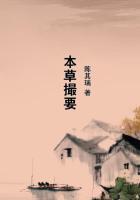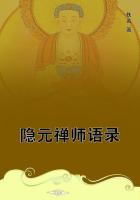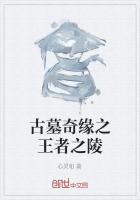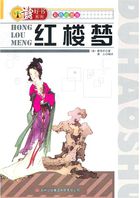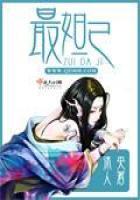They also feasted on a great variety of wild berries, purple, yellow, and black currants, which were delicious and more pleasant to the palate than those grown in their Virginia home-gardens; also service-berries, popularly known to later emigrants as "sarvice-berries." These grow on small bushes, two or three feet high; and the fruit is purple-skinned, with a white pulp, resembling a ripe gooseberry.
The journal, next day, has the following entry:--"This morning early, before our departure, we saw a large herd of the big-horned animals, which were bounding among the rocks on the opposite cliff with great agility.
These inaccessible spots secure them from all their enemies, and their only danger is in wandering among these precipices, where we would suppose it scarcely possible for any animal to stand; a single false step would precipitate them at least five hundred feet into the water.
"At one and one fourth miles we passed another single cliff on the left; at the same distance beyond which is the mouth of a large river emptying from the north. It is a handsome, bold, and clear stream, eighty yards wide--that is, nearly as broad as the Missouri--with a rapid current, over a bed of small smooth stones of various figures.
The water is extremely transparent; the low grounds are narrow, but possess as much wood as those of the Missouri. The river has every appearance of being navigable, though to what distance we cannot ascertain, as the country which it waters is broken and mountainous.
In honor of the Secretary of War we called it Dearborn's River."
General Henry Dearborn, who was then Secretary of War, in Jefferson's administration, gave his name, a few years later, to a collection of camps and log-cabins on Lake Michigan; and in due time Fort Dearborn became the great city of Chicago. Continuing, the journal says:
"Being now very anxious to meet with the Shoshonees or Snake Indians, for the purpose of obtaining the necessary information of our route, as well as to procure horses, it was thought best for one of us to go forward with a small party and endeavor to discover them, before the daily discharge of our guns, which is necessary for our subsistence, should give them notice of our approach.
If by an accident they hear us, they will most probably retreat to the mountains, mistaking us for their enemies, who usually attack them on this side." . . . . . . . . .
Captain Clark was now in the lead with a small party, and he came upon the remains of several Indian camps formed of willow-brush, Traces of Indians became more plentiful.
The journal adds:--"At the same time Captain Clark observed that the pine trees had been stripped of their bark about the same season, which our Indian woman says her countrymen do in order to obtain the sap and the soft parts of the wood and bark for food.
About eleven o'clock he met a herd of elk and killed two of them; but such was the want of wood in the neighborhood that he was unable to procure enough to make a fire, and was therefore obliged to substitute the dung of the buffalo, with which he cooked his breakfast.
They then resumed their course along an old Indian road.
In the afternoon they reached a handsome valley, watered by a large creek, both of which extended a considerable distance into the mountain.
This they crossed, and during the evening travelled over a mountainous country covered with sharp fragments of flint rock; these bruised and cut their feet very much, but were scarcely less troublesome than the prickly-pear of the open plains, which have now become so abundant that it is impossible to avoid them, and the thorns are so strong that they pierce a double sole of dressed deer-skin; the best resource against them is a sole of buffalo-hide in parchment [that is, hard dried]. At night they reached the river much fatigued, having passed two mountains in the course of the day, and travelled thirty miles. Captain Clark's first employment, on lighting a fire, was to extract from his feet the thorns, which he found seventeen in number."
The dung of the buffalo, exposed for many years to the action of sun, wind, and rain, became as dry and firm as the finest compressed hay.
As "buffalo chips," in these treeless regions, it was the overland emigrants' sole dependence for fuel.
The explorers now approached a wonderful pass in the Rocky Mountains which their journal thus describes:
"A mile and a half beyond this creek [Cottonwood Creek] the rocks approach the river on both sides, forming a most sublime and extraordinary spectacle.
For five and three quarter miles these rocks rise perpendicularly from the water's edge to the height of nearly twelve hundred feet.
They are composed of a black granite near their base, but from the lighter color above, and from the fragments, we suppose the upper part to be flint of a yellowish brown and cream color.
"Nothing can be imagined more tremendous than the frowning darkness of these rocks, which project over the river and menace us with destruction.
The river, one hundred and fifty yards in width, seems to have forced its channel down this solid mass; but so reluctantly has it given way, that during the whole distance the water is very deep even at the edges, and for the first three miles there is not a spot, except one of a few yards, in which a man could stand between the water and the towering perpendicular of the mountain. The convulsion of the passage must have been terrible, since at its outlet there are vast columns of rock torn from the mountain, which are strewed on both sides of the river, the trophies, as it were, of its victory. Several fine springs burst out from the chasms of the rock, and contribute to increase the river, which has a strong current, but, very fortunately, we were able to overcome it with our oars, since it would have been impossible to use either the cord or the pole.


